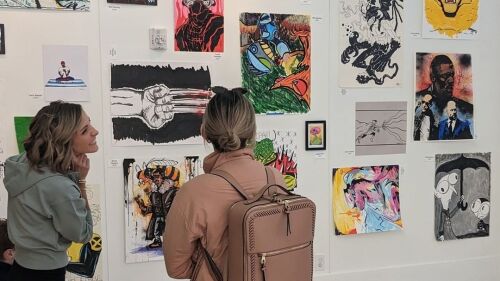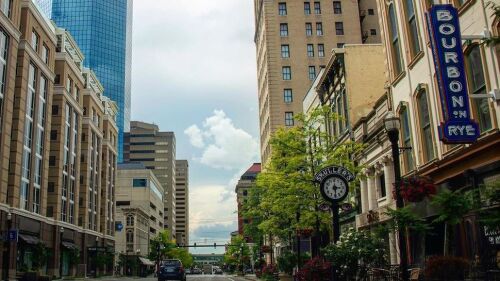The Bluegrass. Bourbon Country. The Horse Capital of the World. These are all nicknames given to our region based on a few of our more defining features. Yeah, this area is pretty cool.
But today, we want to dig down a bit deeper + take a look at what defines central Kentucky geologically. Let’s go beneath the rolling hills and horse farms to learn more about karst topography.
Karst 101
“Karst topography is the landscape that’s formed on top of soluble rock, usually limestone rock, which is what we have all around Lexington,” said Dr. Alice Turkington, Associate Professor of Geography at UK.
“In the Bluegrass, there’s a complex mixture of water that flows both above ground + below ground.” Water flowing underground slowly eats away at the soft limestone rock, while the sandstone rock that sits on top of the limestone, remains relatively intact. This kind of unique water flow has created caves, sinkholes, and springs all across our landscape.
McConnell Springs
You don’t have to travel deep into the wilderness to see examples of karst topography, you barely have to travel outside of downtown. McConnell Springs is a city park that surrounds three different natural springs:
- The Blue Hole | Waters flowing underground from SW Lexington fill this 15-ft. spring from the bottom up. Due to its depth and clear underground water, this spring glows cerulean blue.
- The Boils | After heavy rain, water rushes up from underground with such force that it looks like the spring is boiling. Sometimes, the boiling fountains can reach a height of up to two feet.
- The Final Sink | Water flowing near this site disappears underground into a cave-like feature where it flows for one-third of a mile before reemerging at Preston’s Cave.
Karst topography + bourbon
Water is an essential ingredient of bourbon, as are corn and charred-oak barrels. During the 1700s, way before Kentucky distillers had distilling down to a science, distilleries were using Kentucky’s natural limestone-filtered water to make their bourbon.
Limestone acts as a natural purifier for water. As water rushes over the limestone rock, the rock filters out iron minerals, which give liquor a bad taste, and adds minerals like calcium.
Most historians agree that this natural filtration process greatly contributed to the early success of bourbon in Kentucky. Today, however, most distilleries don’t have access to large enough quantities of limestone-filtered water to make bourbon on a large scale. Instead, a process known as reverse osmosis is utilized to purify water for the distilling process.
Karst topography + horses
Bluegrass has always been considered to be a great choice for horse pastures. It’s highly nutritious + is extremely tolerant of close, frequent grazing. But this super grass isn’t just grown from rainwater.
According to Dr. Alice at UK, “Limestone creates rich amount of phosphorus.” This can be found in both the water + the soil in the Bluegrass region. “These nutrients feed the grass, which feeds the Thoroughbreds — in turn giving them strong healthy bones.”













